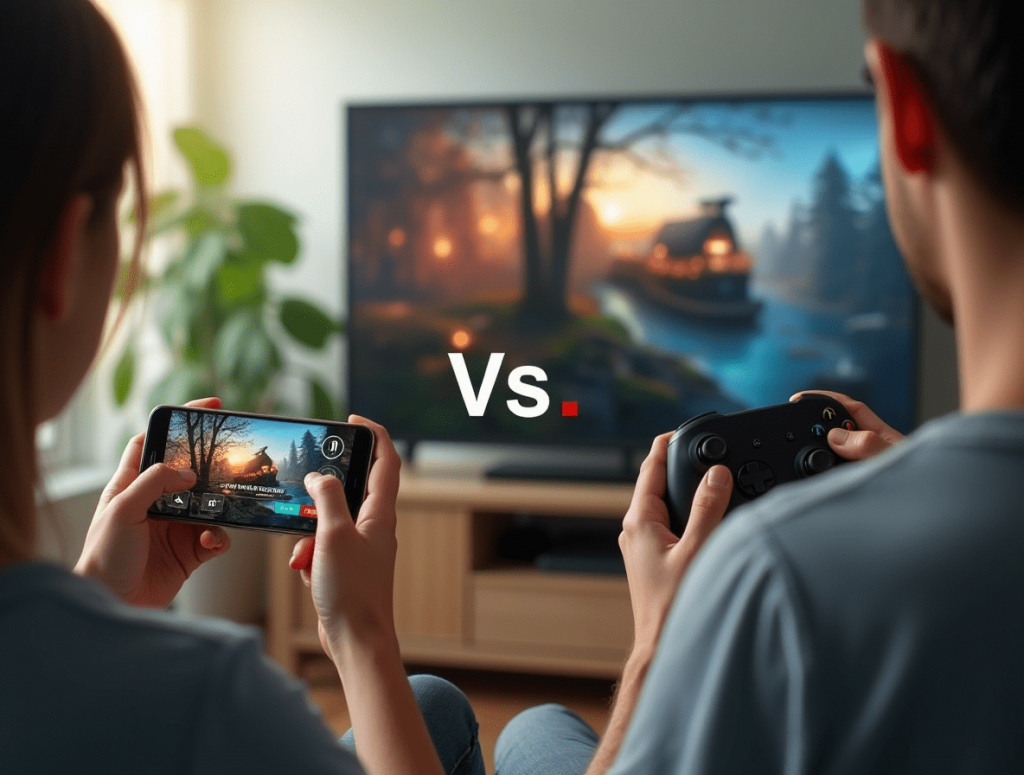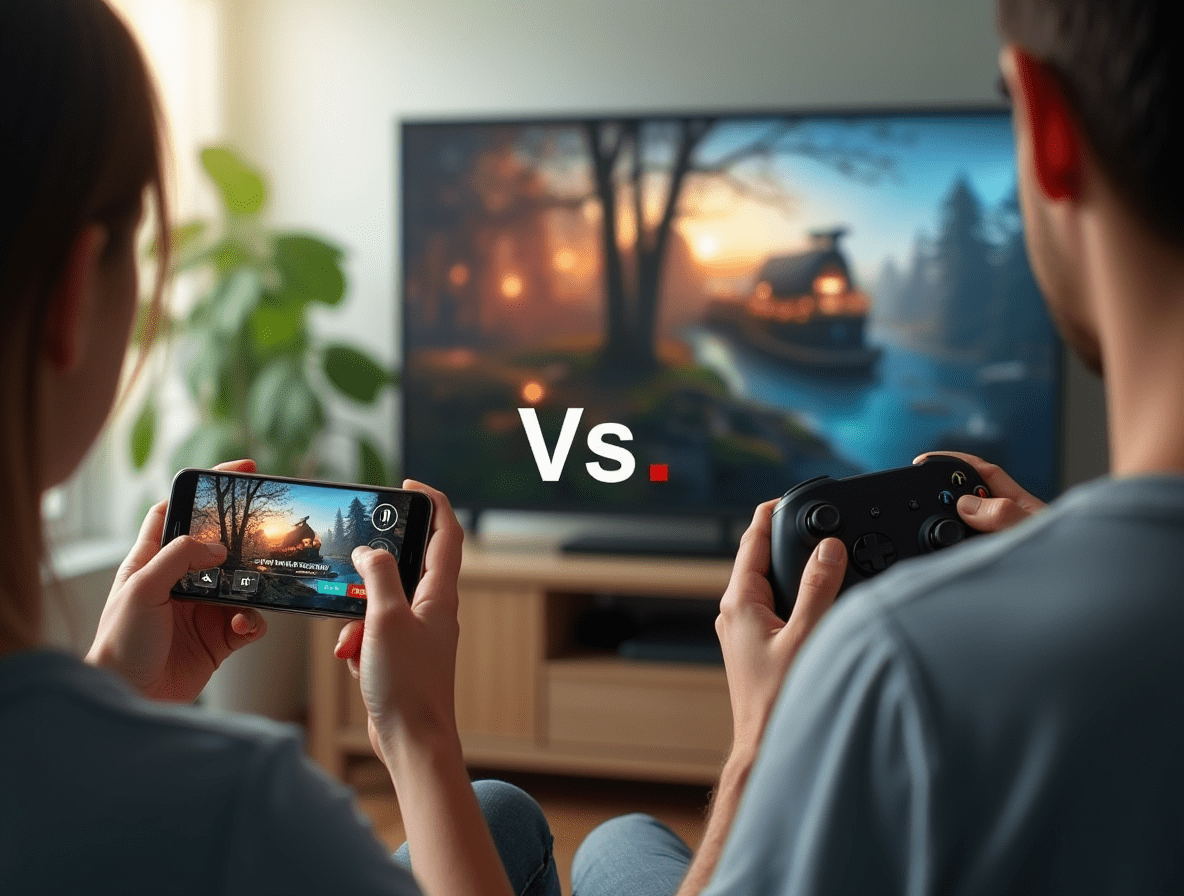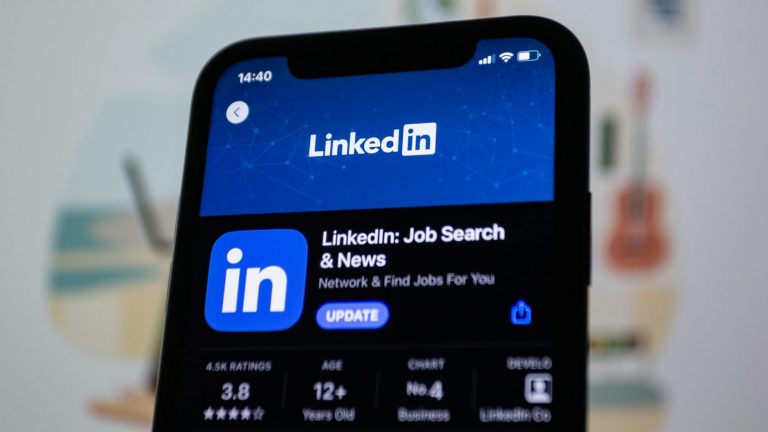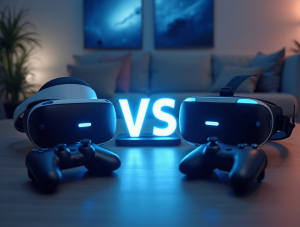
The Ultimate Engagement Comparison
Gaming has evolved dramatically over the past decade, with mobile devices challenging traditional consoles for players’ time and attention. Today, over 2.7 billion people worldwide play mobile games, while console gaming maintains a dedicated audience of approximately 800 million. This dramatic difference in user base raises a fascinating question: which platform actually delivers the more engaging gaming experience?
For many players, the answer isn’t straightforward. Mobile gaming offers unprecedented accessibility and convenience, while console gaming provides depth and immersion that many smartphone games can’t match. As the line between these platforms continues to blur, understanding their unique engagement models becomes increasingly important.
This comparison explores how both platforms engage players through different mechanisms – from game design and social features to hardware capabilities and business models – to help you determine which gaming experience better suits your preferences and lifestyle.
Accessibility and Convenience: Gaming Where and When You Want
Mobile Gaming’s Accessibility Advantages
Mobile gaming excels in removing barriers to play:
- Always available: Your phone is almost always with you
- Instant access: Most mobile games launch in seconds
- Short session design: Games designed for 5-10 minute play sessions
- No additional hardware: Uses the device you already own
- Low entry cost: Many free-to-play options with optional purchases
The statistics highlight this convenience factor: the average mobile gaming session lasts 6-8 minutes, occurring 8-10 times throughout the day. This “gaming in the gaps” approach fits perfectly into busy modern lifestyles.
Console Gaming’s Accessibility Challenges
Console gaming typically requires more intentional engagement:
- Fixed location: Primarily played at home on a television
- Setup time: Boot-up, loading, and updates require patience
- Longer sessions: Games typically designed for 30+ minute sessions
- Dedicated hardware: Requires purchasing specific equipment
- Higher entry costs: Consoles ($300-500) plus games ($40-70 each)
The average console gaming session lasts approximately 90 minutes, representing a more deliberate commitment to play rather than spontaneous engagement.
The Engagement Impact
Mobile’s accessibility creates broader but often shallower engagement, while consoles foster deeper, more focused experiences. According to industry research, mobile gamers play more frequently, but console players engage in longer, more immersive sessions.
Game Design and Depth: Casual vs. Complex Experiences
Mobile Game Design Philosophy
Mobile games typically follow design principles optimized for their platform:
- Simplified controls: Touch and swipe interfaces limit complexity
- Short gameplay loops: Quick reward cycles maintain interest
- Progress mechanics: Daily rewards and login bonuses encourage regular returns
- Vertical progression: Character/account advancement drives ongoing play
- Accessibility focus: Low skill floor for broad appeal
Popular mobile titles like Candy Crush, Clash Royale, and Genshin Impact exemplify these approaches, creating engagement through quick satisfaction and progression systems.
Console Game Design Approach
Console games generally offer greater mechanical and narrative depth:
- Complex control schemes: Controllers with multiple buttons enable nuanced interactions
- Extended gameplay loops: Missions, levels, and campaigns structured for longer play
- Narrative immersion: Story-driven experiences with character development
- Skill mastery: Higher skill ceilings reward practice and improvement
- Completionist content: Side quests, collectibles, and achievements extend play time
Games like God of War, Red Dead Redemption 2, and Elden Ring demonstrate how console titles create engagement through immersive worlds and mechanical depth.
The Engagement Impact
Research shows that while mobile games attract more players, console games generate significantly longer average playtimes. The average mobile game retains only 15% of users after 30 days, while successful console titles often see players returning for hundreds of hours across months or years.
Hardware and Immersion: Screen Size and Processing Power
Mobile Gaming Hardware Experience
Mobile devices offer convenience but face technical limitations:
- Small screens: Typically 5-7 inches with limited visual immersion
- Touch controls: Lack tactile feedback and precision
- Variable performance: Wide range of device capabilities
- Battery constraints: Power-intensive games drain batteries quickly
- Interruptions: Calls, messages, and notifications disrupt play
These limitations affect immersion, though high-end phones now offer impressive graphical capabilities that rival older consoles.
Console Gaming Hardware Experience
Consoles provide dedicated gaming hardware advantages:
- Large screen experience: Played on TVs (32-65+ inches)
- Tactile controls: Physical buttons and haptic feedback
- Consistent performance: Standardized hardware specifications
- Audio immersion: Often connected to sound systems or headphones
- Dedicated play environment: Fewer interruptions during sessions
These factors create a more immersive sensory experience that deepens engagement. Research indicates that larger screens and quality audio significantly increase emotional engagement and time perception distortion (losing track of time while playing).
The Engagement Impact
Studies measuring player immersion through biometric indicators (heart rate, galvanic skin response) show console experiences generally create stronger physiological engagement responses compared to identical games on mobile devices.
Social Connectivity: Different Approaches to Player Interaction
Mobile Gaming Social Elements
Mobile games have pioneered accessible social mechanics:
- Asynchronous multiplayer: Interact without being online simultaneously
- Social media integration: Easy sharing and friend invites
- Guilds and clans: Low-commitment social structures
- Leaderboards: Competition without direct interaction
- Location-based features: Some games incorporate physical location
These features create light social connections without requiring scheduled play sessions, appealing to casual players with unpredictable availability.
Console Gaming Social Features
Console platforms emphasize more direct social experiences:
- Real-time multiplayer: Coordinated play sessions with friends
- Voice chat integration: More personal communication during play
- Cooperative campaigns: Shared story experiences
- Community features: Forums, groups, and events
- Streaming integration: Broadcasting gameplay to audiences
These systems foster deeper social connections but demand more coordination and availability from players.
The Engagement Impact
Research on gaming motivation reveals that strong social connections significantly increase engagement longevity. While mobile games reach more players, console games often create stronger social bonds that enhance retention and session length.
Business Models and Engagement Design
Mobile Gaming Business Models
Mobile gaming’s predominant free-to-play model shapes engagement patterns:
- Energy systems: Limit play session length to encourage regular returns
- Gacha/loot mechanics: Random rewards drive repeated engagement
- In-app purchases: Monetize player progression and cosmetics
- Advertisement integration: Free play interrupted by ads
- Battle passes: Season-based progression and rewards
These systems deliberately create engagement patterns optimized for retention and monetization rather than pure entertainment value.
Console Gaming Business Models
Console gaming primarily uses traditional purchase models:
- Premium pricing: One-time purchase for complete experience
- DLC and expansions: Optional additional content
- Season passes: Pre-purchase of planned content
- Subscription services: Access libraries of games (Game Pass, PS Plus)
- Limited microtransactions: Growing but still less prevalent than mobile
These approaches generally prioritize front-loaded engagement and satisfaction over long-term retention mechanics.
The Engagement Impact
The different business models create distinct engagement patterns. Mobile games tend to drive frequent but shorter sessions over longer periods, while console games often generate intense engagement for weeks or months before players move to new titles.
How Players Engage: Attention and Cognitive Investment
Mobile Gaming Engagement Patterns
Mobile gaming typically involves:
- Divided attention: Often played while multitasking
- Frequent, short sessions: “Snackable” content consumption
- Lower cognitive load: Simpler decision-making and strategies
- Background activity: Often secondary to other activities
- Fill time mechanics: Designed for waiting periods and transit
These patterns suit certain contexts but may limit emotional investment and flow states.
Console Gaming Engagement Patterns
Console gaming usually involves:
- Focused attention: Primary activity during play sessions
- Longer, dedicated sessions: Set aside specifically for gaming
- Higher cognitive engagement: Complex systems and decision-making
- Flow state facilitation: Designed to create immersive “in the zone” experiences
- Emotional investment: Stronger narrative and character connections
These patterns create deeper engagement but require more dedicated time and energy.
The Engagement Impact
Research on flow states in gaming indicates that console experiences more frequently create optimal engagement conditions where players lose track of time and experience deep satisfaction. Mobile games excel at creating habit loops but generate fewer reported flow experiences.
Who Finds Each Platform More Engaging?
Mobile Gaming Appeals Most To:
- Casual gamers seeking short entertainment breaks
- Busy professionals with unpredictable schedules
- Commuters and people frequently on the move
- Cost-conscious players exploring free options
- Social gamers who enjoy light, asynchronous interaction
Market research shows that mobile gamers span all age groups but skew slightly older than console players, with 55% of mobile gamers being over 35.
Console Gaming Appeals Most To:
- Dedicated gamers seeking immersive experiences
- Story-focused players who value narrative depth
- Competitive gamers who prioritize precise controls
- Technical enthusiasts who appreciate advanced graphics
- Social players who enjoy shared real-time experiences
Console gamers tend to be younger on average (core demographic 18-34) and more likely to identify gaming as a primary hobby.
Conclusion: Different Types of Engagement for Different Needs
Both mobile and console gaming create engagement through different means, appealing to different player preferences and contexts:
Mobile gaming excels at:
- Accessibility and convenience
- Fitting into busy lifestyles
- Low barriers to entry
- Small moments of satisfaction
- Habit formation and regular check-ins
Console gaming excels at:
- Immersion and flow states
- Narrative and emotional investment
- Skill development and mastery
- Sensory richness and detail
- Deeper social connections
The “more engaging” platform ultimately depends on your personal definition of engagement. If engagement means easily accessible entertainment that fits into life’s spare moments, mobile gaming wins. If engagement means losing yourself in immersive worlds that command your full attention, console gaming delivers the superior experience.
Many players find both platforms engaging in different contexts, using mobile games to fill small gaps in their day while reserving console sessions for dedicated entertainment time. The ideal approach may be recognizing that these platforms serve complementary rather than competing roles in your gaming life.
FAQ Section
Are mobile games “real games” compared to console titles?
Yes, mobile games are legitimate gaming experiences, though they typically have different design goals than console titles. Mobile games optimize for accessibility and short sessions, while console games focus on depth and immersion. Both approaches are valid responses to different player needs and contexts.
Can I get console-quality experiences on mobile devices?
Increasingly, yes. Games like Genshin Impact, Call of Duty Mobile, and PUBG Mobile deliver experiences comparable to older console generations. However, mobile devices still face constraints in control precision, screen size, and sustained performance that affect the overall experience.
Which platform has more addictive mechanics?
Mobile games more frequently implement habit-forming mechanics like daily rewards, energy systems, and push notifications that encourage compulsive checking. Console games typically focus less on daily retention and more on creating satisfying self-contained experiences.
Do professional gamers prefer consoles over mobile?
Competitive gaming exists on both platforms, but different genres dominate each. Console/PC esports focus on shooters, fighting games, and MOBAs, while mobile esports feature battle royales, card games, and MOBAs optimized for touch. Professional players typically choose platforms based on their preferred genre.
Is mobile gaming replacing console gaming?
While mobile gaming’s financial success and player base continue growing, console gaming also remains healthy with expanding sales. Rather than replacement, we’re seeing specialization, with each platform serving different player needs and contexts within the broader gaming ecosystem.














